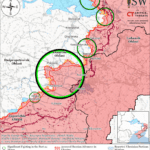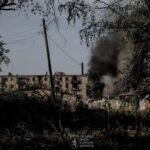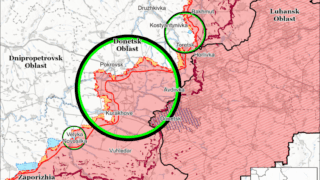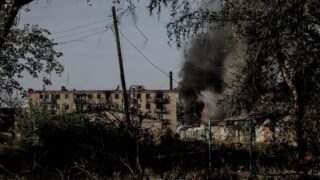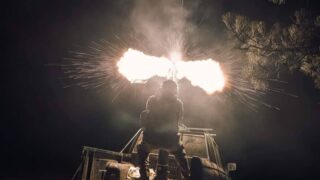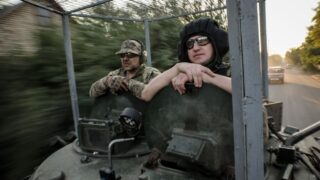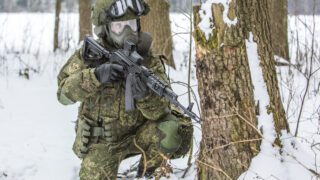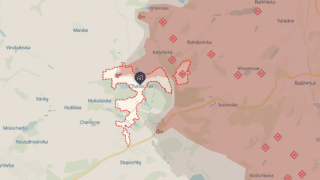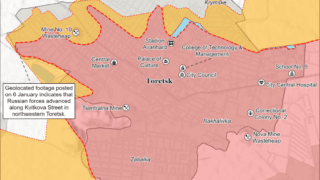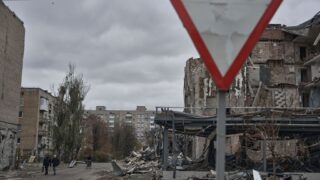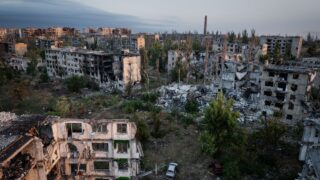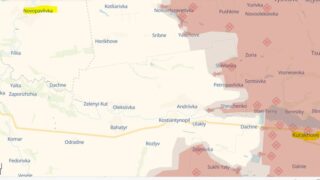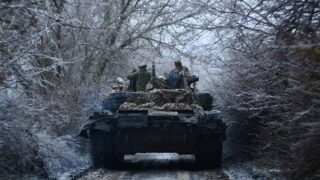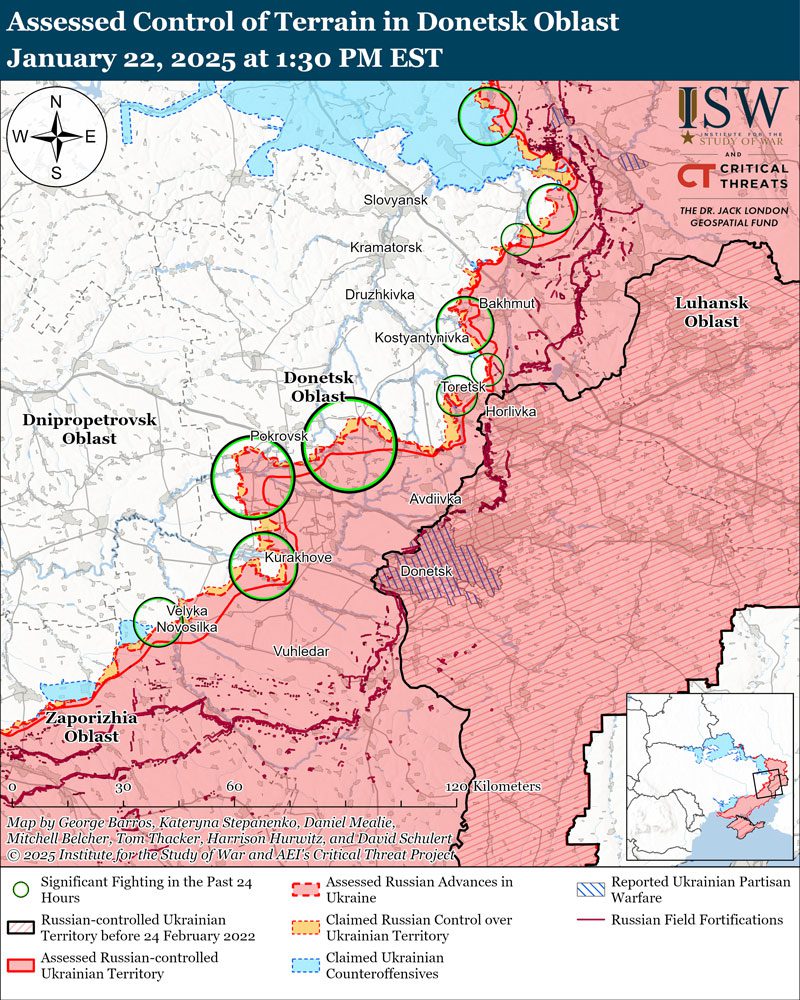
Russians capture Novovasylivka, make more gains as their advance slows down
Russian forces have captured Novovasylivka near Pokrovsk and advanced near nine other settlements in Donetsk Oblast, according to OSINT project DeepState. The ISW reported Russian gains across multiple areas in the region. However, the offensive appears to be slowing, hinting at a potential culmination of months-long efforts due to strained resources.
For months, Russia has been pushing to capture the remaining parts of Donetsk Oblast in eastern Ukraine, with a focus on Pokrovsk, Kurakhove, Chasiv Yar and other Ukrainian strongholds. Pokrovsk has been the focal point of Russia’s ground assaults. By late summer 2024, the situation near Pokrovsk had deteriorated with renewed Russian advances in the east.
According to DeepState’s report on 23 January, Russian forces made advances near Velyka Novosilka, Novoandriivka, Chasiv Yar, Yantarne, Petropavlivka, Yasenove, Kotlyne, Vozdvyzhenka, and Baranivka.
The Institute for the Study of War (ISW) confirmed in its 22 January report that Russian forces recently advanced near several key areas in Donetsk Oblast, including Chasiv Yar, Toretsk, Pokrovsk, Kurakhove, and Velyka Novosilka.
ISW on fresh Russian gains
Geolocated footage published on 22 January showed Russian forces advancing along Zaliznychna Street in northwestern Chasiv Yar and making marginal gains north and northwest of the Chasiv Yar Refractory Plant in the central part of the settlement, ISW reported.
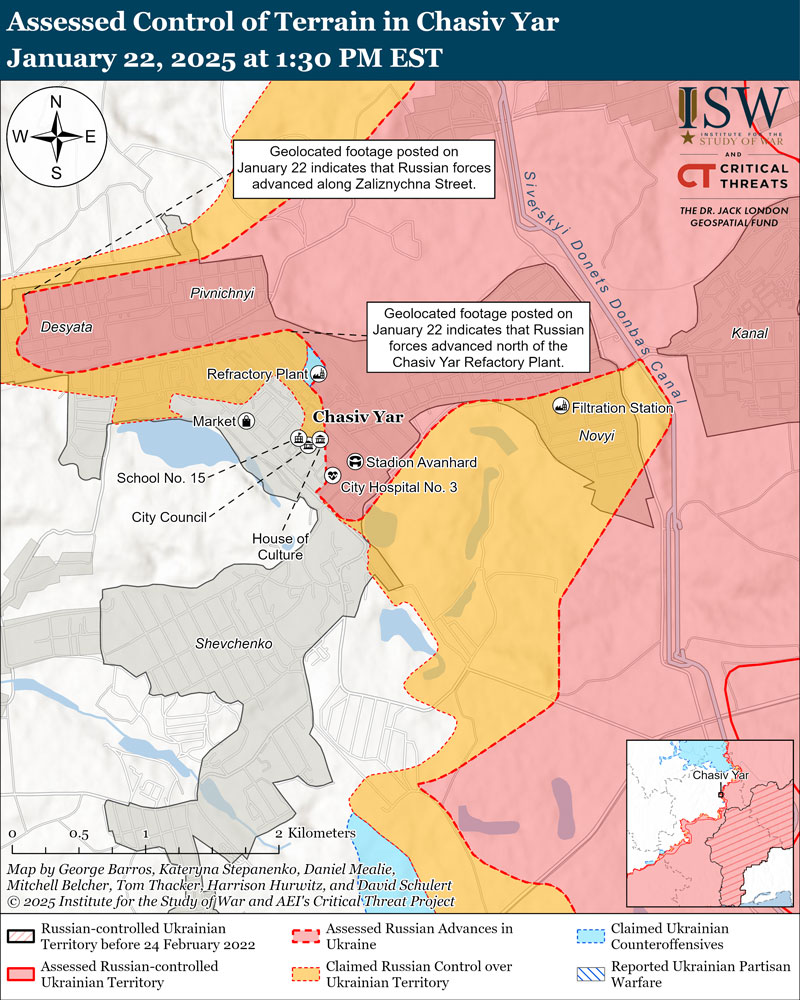
In the Toretsk direction, both Ukrainian and Russian forces made advances on 22 January. Geolocated footage showed drone operators of the Russian 9th Motorized Rifle Brigade striking Ukrainian forces in western Shcherbynivka, indicating Ukrainian forces had recently regained previously lost positions. Additional geolocated footage from 11 January, analyzed on 22 January, showed Russian advances along Kachalova and Puzanova streets in northern Toretsk, ISW noted.
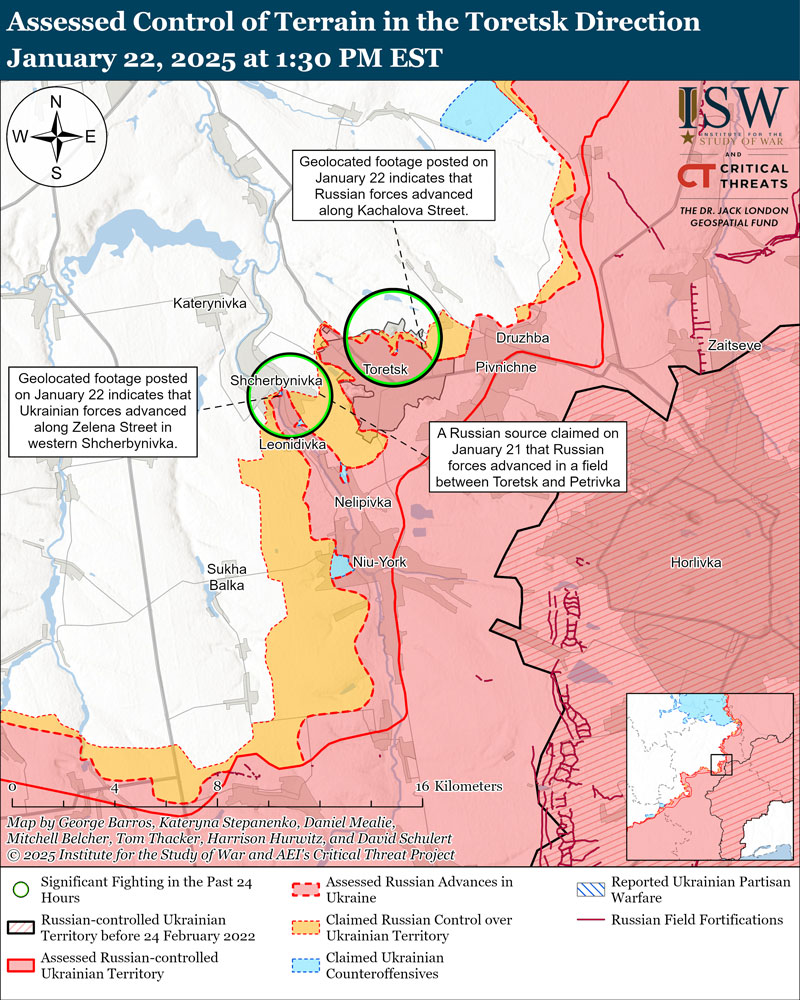
A Ukrainian battalion commander in the Toretsk direction stated on 22 January that Ukrainian forces are defending limited positions in Toretsk while trying to contain Russian forces within the settlement.
Russian advances slow down
Near Pokrovsk, geolocated footage from 22 January showed Russian forces advancing in fields northeast of Kotlyne and within the northeastern part of the settlement, according to ISW. However, Ukrainian military observer Kostyantyn Mashovets assessed that Russian advances south and east of Pokrovsk have slowed in recent weeks.
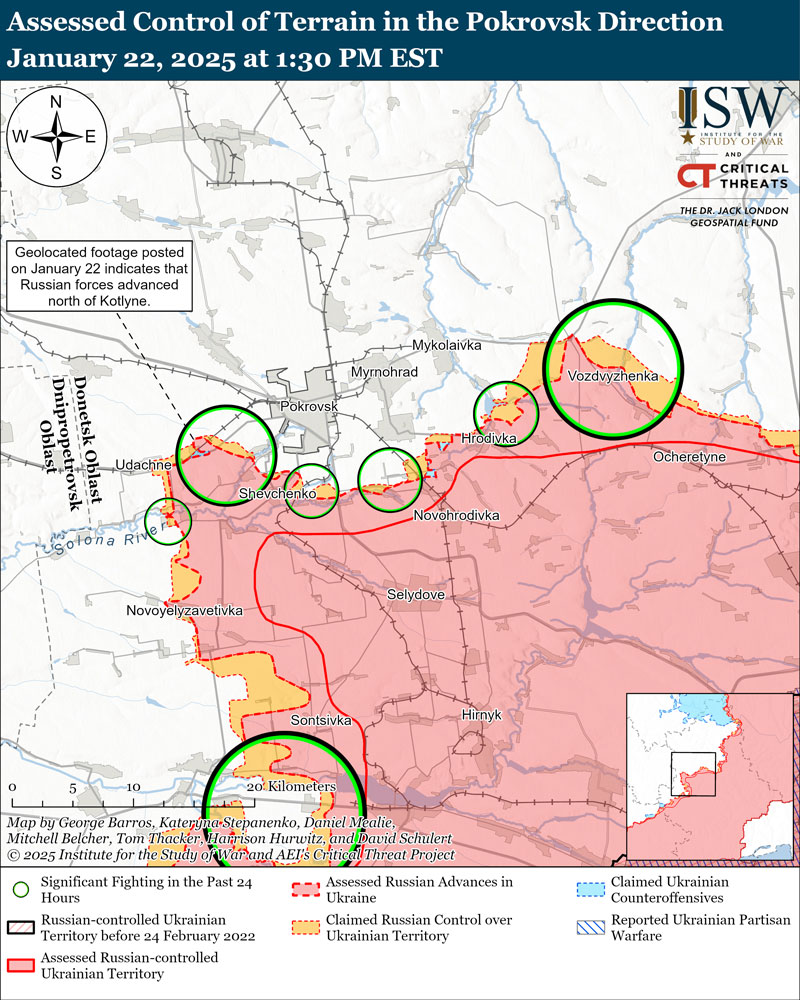
RFE/RL’s project Donbas.Realii reported that Ukrainian forces recaptured positions near Shevchenko and in Udachne on Pokrovsk’s southern flank, citing DeepState’s update from the early hours of 22 January.
Viktor Trehubov, spokesperson for the Khortytsia operational-strategic group, told Radio Svoboda on 20 January that Russian forces were attempting to outflank Pokrovsk from the west, aiming for a partial encirclement.
“Russians simply don’t have the resources to assault the city head-on as they did previously in other settlements,” Trehubov said.
The following day, Trehubov stated on national television that the Russian offensive is slowing down, adding “we hope it will eventually stop.”
Why the Russian forces keep advancing
The ISW reported Russian advances near and within Velyka Novosilka during ongoing offensives on January 22. Geolocated footage from January 21-22 shows gains west of Rozdolne and along Horizhnia Street in northeastern Velyka Novosilka.
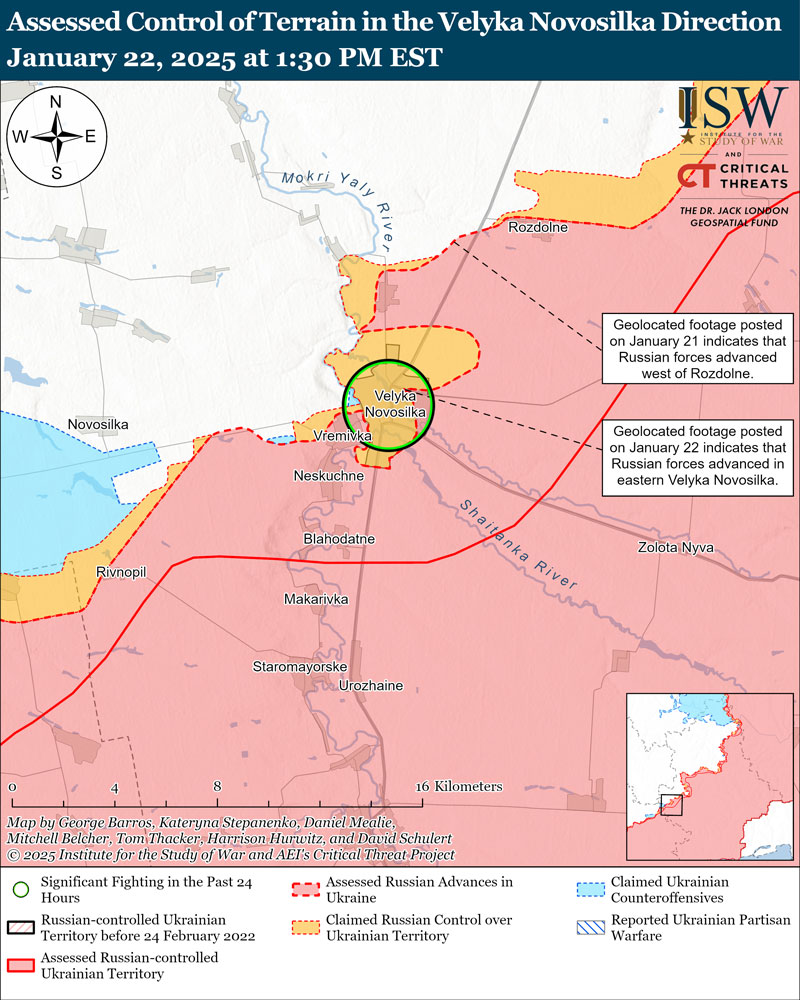
The Ukrainian Army’s 110th Separate Mechanized Brigade detailed Russian tactical approaches near Velyka Novosilka and highlighted a key issue in the Ukrainian defense, shedding light on why Russian forces continue to advance in Ukraine’s east, Texty reported on 22 January.
The brigade explained that Ukraine’s defense near Velyka Novosilka contrasts with that of now occupied Avdiivka in the past.
“In Avdiivka, there were no shells, and FPV drones were just beginning to develop,” they said. “Back then, infantry compensated for the lack of artillery. Now, while there are enough shells and drones, there’s no one to fight. Rifle units suffer from a total lack of personnel.”
According to the Brigade, Russian forces employ groups of 4-6 troops advancing toward Ukrainian positions hourly from different directions, with most intense activities occurring at dawn when fog or rain impairs aerial reconnaissance.
“They move through tree lines, using bushes and trees as cover from our FPV drones. When we spot them, we engage. Hitting a moving target with artillery is very challenging; cluster munitions are somewhat effective in such cases. Reaching them with FPV drones in tree lines is difficult due to radio horizon limitations and plant branches interfering with accurate hits. Additionally, some enemy fighters now carry automatic shotguns and manage to shoot down our drones,” the brigade explained.
The Ukrainian military unit emphasized that while they manage to cut off some infantry at this stage, the Russians continue advancing due to their numerical advantage. They added that their brigade eliminates more enemy troops daily than some of their own battalions have in total personnel, highlighting significant manpower shortages in infantry units.
Related:

